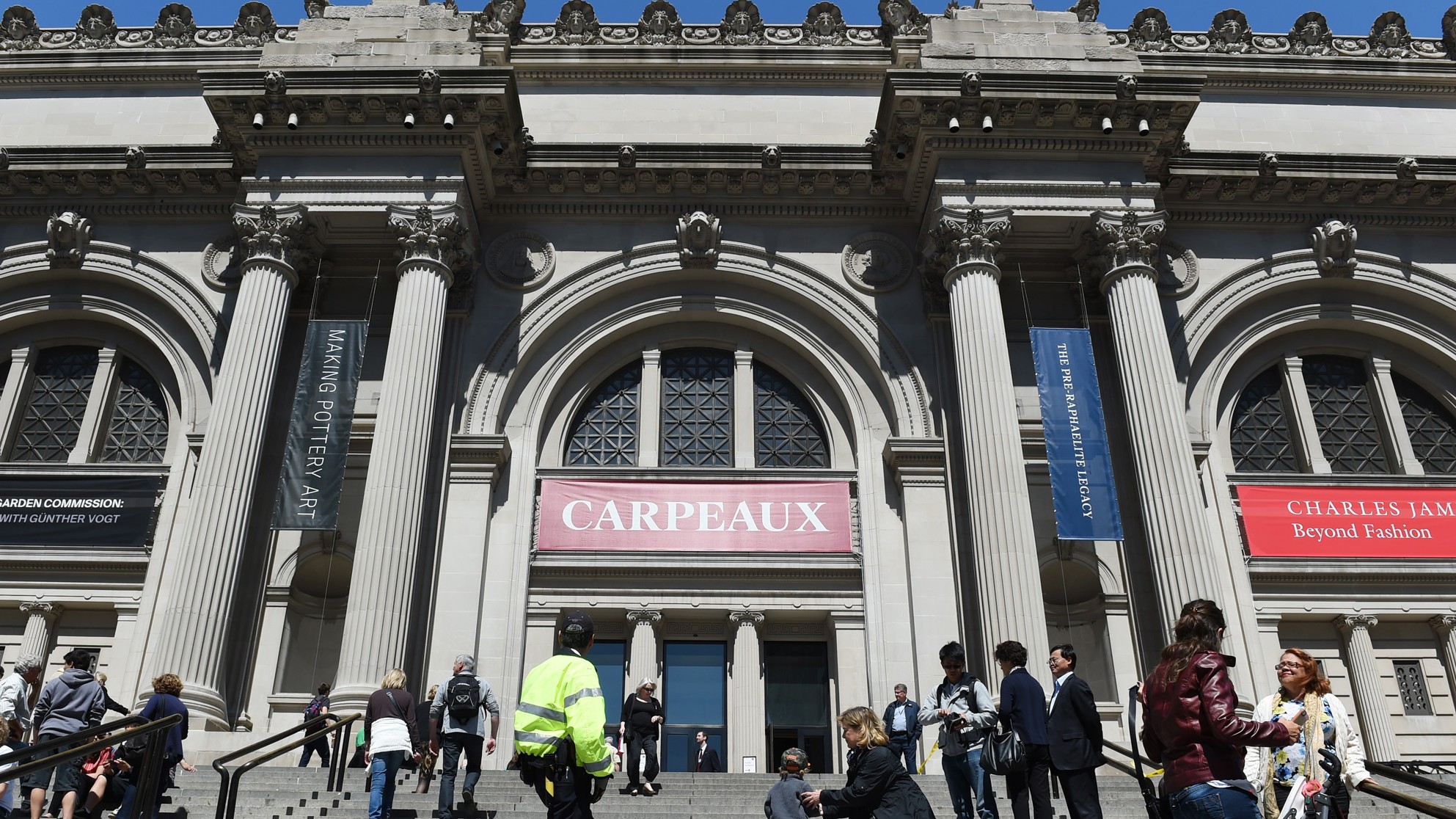–
Sheena Wagstaff never tires of emphasizing it: With its commitment to contemporary art, the Metropolitan Museum is by no means jumping on a moving train. Rather, the museum has dealt with it since it was founded. It was founded 146 years ago. The modern and contemporary art department is 4 ½ years old. For the newly created department, Director Thomas Campbell brought curator Sheena Wagstaff from Tate Modern in London to New York in 2012. While a 600 million dollar grand piano is being expanded in the main building on Fifth Avenue, the former home of the Whitney Museum on Madison Avenue will serve as a transition platform for what is to come for the next eight years.
“Unfinished”: Works from 700 years of art history
The two opening exhibitions in the listed Marcel Breuer building are programmatic. For “Unfinished: Thougths Left Visible” those responsible have compiled works from seven hundred years of European art history under the flexible term “unfinished”. So you walk over two floors from Jan van Eyck’s portrait of Saint Barbara to van Gogh’s possibly last painting to a sculpture by the Swiss Urs Fischer, consisting of a smashed nude on a smashed chaise longue.
With its unique encyclopedic collection, the Metropolitan Museum can place contemporary art in a historical context like no other museum, says Sheena Wagstaff. In addition, one wants to move artists beyond the western canon into the spotlight. Nasreen Mohamedi, for example, to whom the second opening exhibition is dedicated. This representative of Indian modernism is unlikely to be known to very few. Just as little as it should be known that there is such a thing as Indian modernism at all:
It is time to tell these stories too, says Sheena Wagstaff, and to look for contributions to modernity where no one has previously suspected them.
Missed connection to contemporary art
With the Museum of Modern Art, the Whitney Museum, the Guggenheim Museum and the New Museum, New York already has more temples of modern and contemporary art than most metropolises. To compete with these institutions, the Metropolitan Museum would have to brag. Because in the current art market, it’s easier to get five great Old Masters than a decent Jackson Pollock for the same price. Apparently, for financial reasons, one cannot or does not want to keep up. So in that regard, the Metropolitan Museum has actually missed the boat. Instead, they rely on donations.
“We can offer patrons rooms in which their gifts are appropriately displayed and celebrated, both here at the Met Breuer and, in a few years’ time, in the Metropolitan Museum itself.”
Whether given, found or bought: Somehow the Metropolitan Museum will come to the coveted contemporary art. It just takes more than the goods to prove that another museum is needed for it. The recipe for mixing a little now with a lot from the day before yesterday in every exhibition on any topic will soon run out of steam. To find disguised Warhols and slumbering judges in distant parts of the world does not seem very promising. After all, the museum is presenting its first in-house artist, Vijay Iyer. The versatile pianist regularly transforms the lobby of the Met Breuer into a live sound installation. Of course, performance also belongs in every trend-conscious establishment today. But in this case at least you know what you have. Or better: what you hear.
The Met Breuer, New York: “Unfinished: Thoughts Left Visible”. Bis 4. September; “Nasreen Mohamedi”. Bis 5. Juni; “Relation: A Performance. Residency by Vijay Iyer”. Im März.
–


